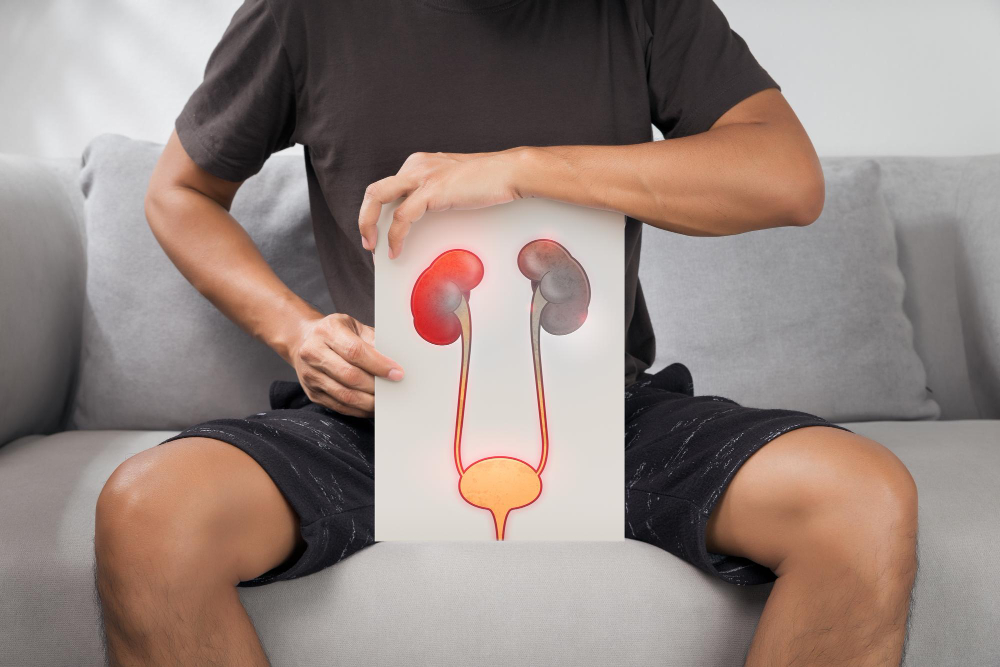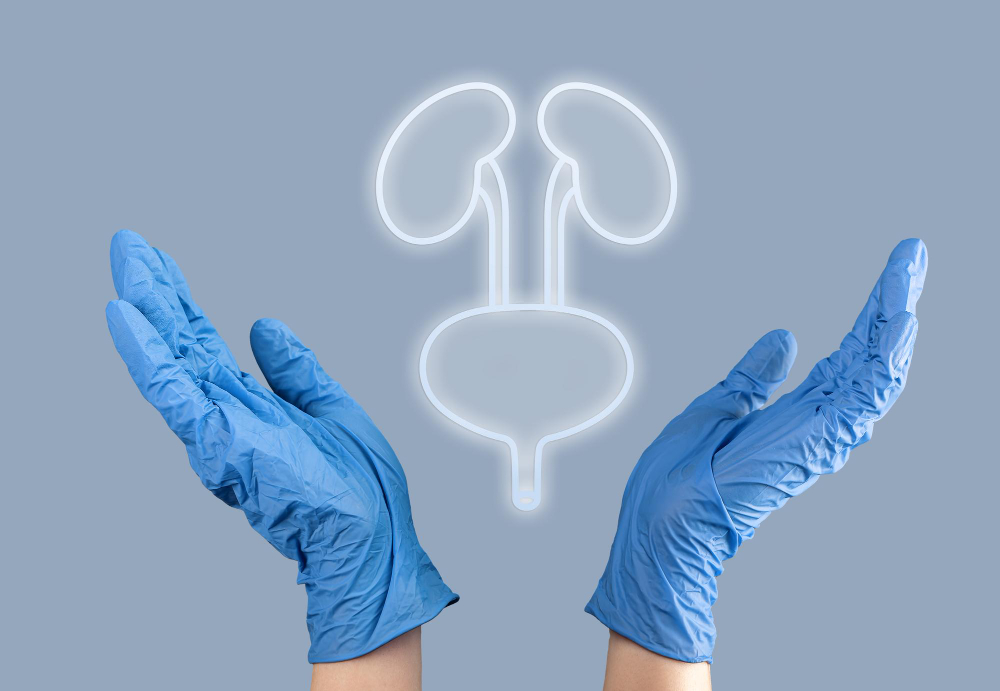
Urodynamics refers to a series of diagnostic tests designed to assess how well the bladder, urethra, and pelvic floor muscles store and release urine. This comprehensive evaluation helps identify how efficiently the urinary system is working and can be instrumental in diagnosing various bladder and urinary tract disorders, such as urinary incontinence, overactive bladder, and urinary retention. Often referred to as a “stress test” for the bladder, urodynamics provides valuable insights into the bladder’s storage and emptying capabilities, helping urologists determine the root cause of urinary issues.
According to the National Institute of Diabetes and Digestive and Kidney Diseases (NIDDK), urodynamic tests are used when initial evaluations, such as physical exams and medical history, are insufficient to diagnose urinary symptoms. For patients experiencing persistent or complex bladder problems, urodynamics can clarify the underlying causes and aid in creating a targeted treatment plan.
Why is Urodynamics Necessary?
Urodynamics is essential for diagnosing a wide range of bladder and urinary tract issues. By measuring bladder pressure, urine flow, and muscular responses, urodynamics helps determine how well the bladder and urethra coordinate to store and release urine. Urodynamic tests are especially useful in cases where symptoms are ambiguous or when other tests have not provided a clear diagnosis.
Conditions that Benefit from Urodynamic Testing
- Urinary Incontinence: Urodynamic tests can identify the type of incontinence (stress, urge, overflow, or mixed) and help pinpoint the cause of urinary leakage.
- Overactive Bladder: For individuals with frequent, intense urges to urinate, urodynamics can reveal if involuntary bladder contractions are contributing to symptoms.
- Neurogenic Bladder: Conditions affecting the nervous system, such as multiple sclerosis or spinal cord injuries, can disrupt bladder function, making urodynamic testing essential for diagnosis.
- Urinary Retention: Urodynamic tests help identify why the bladder may not be emptying fully, revealing issues like bladder muscle weakness or obstruction.
- Lower Urinary Tract Symptoms (LUTS): These symptoms include frequent urination, nighttime urination, and weak stream, which may all be clarified through urodynamics.
For more information on bladder health and conditions that benefit from urodynamic testing, visit the National Institutes of Health (NIH).
Preparing for a Urodynamic Test
Urodynamic testing requires minimal preparation, but certain steps help ensure accurate results and a smooth testing experience:
- Follow Fluid Instructions: Patients may be advised to come with a comfortably full bladder. Urologists typically ask patients to drink water before the test and to avoid urinating right before arriving.
- Medication Instructions: Patients should inform their healthcare provider about any medications they are taking, as some drugs can affect bladder function. In certain cases, patients may be instructed to avoid specific medications before the test.
- Voiding Diary: Many urologists ask patients to keep a voiding diary for a few days leading up to the test. This diary tracks urination frequency, volume, and any symptoms experienced, helping to provide a fuller picture of bladder function.
- Wear Comfortable Clothing: Since the procedure involves monitoring bladder function, patients may be asked to undress from the waist down or wear a hospital gown during testing.
For a detailed guide on preparing for urodynamic testing, refer to resources from the National Institute of Diabetes and Digestive and Kidney Diseases (NIDDK).
Types of Urodynamic Tests
Urodynamic testing is a term that encompasses several different tests, each assessing specific aspects of bladder and urethral function. Depending on the patient’s symptoms, one or more of these tests may be performed.
1. Uroflowmetry
Uroflowmetry is a simple, non-invasive test that measures the rate and volume of urine flow. During the test, patients urinate into a special device that calculates the speed of urine flow, measuring how much urine is passed and the time it takes to empty the bladder.
- Purpose: Uroflowmetry helps detect abnormal flow patterns, which can indicate issues such as bladder outlet obstruction or weak bladder muscles.
- When it’s Used: Uroflowmetry is often the first test in a urodynamic evaluation, particularly for patients with a weak urine stream, difficulty starting urination, or incomplete bladder emptying.
2. Cystometry (Cystometrogram)
Cystometry measures bladder pressure as it fills with liquid. During this test, a thin catheter is inserted into the bladder to slowly fill it with a sterile fluid, while a pressure sensor measures how the bladder responds. This test helps determine the bladder’s capacity, its response to pressure, and the threshold at which the urge to urinate occurs.
- Purpose: Cystometry assesses bladder storage capabilities and sensitivity, detecting abnormal contractions and evaluating for conditions like overactive bladder and reduced bladder compliance.
- When it’s Used: This test is useful for patients with symptoms of urge incontinence, frequent urination, or neurogenic bladder.
3. Post-Void Residual Measurement (PVR)
The PVR test measures the amount of urine remaining in the bladder after urination. This can be done using ultrasound or catheterization. High residual urine volumes can indicate incomplete emptying due to bladder dysfunction or obstruction.
- Purpose: PVR helps evaluate the efficiency of bladder emptying and can identify retention issues.
- When it’s Used: This test is commonly used for individuals experiencing urinary retention or overflow incontinence.
4. Pressure Flow Study
A pressure flow study assesses bladder pressure during urination. After a cystometry test, patients are asked to urinate with the catheter still in place, allowing the pressure sensor to measure bladder and urethral pressures as the bladder empties.
- Purpose: This test helps differentiate between issues caused by bladder muscle weakness and those due to urethral obstruction.
- When it’s Used: A pressure flow study is often conducted in cases where patients have a weak urine stream or are suspected of having an obstructed flow.
5. Electromyography (EMG)
Electromyography measures the electrical activity of the muscles in and around the bladder and urethra. Small electrodes are placed on or near the pelvic floor muscles to assess muscle activity.
- Purpose: EMG helps identify abnormal muscle contractions or coordination issues, which may indicate neurological conditions affecting bladder control.
- When it’s Used: EMG is especially useful for individuals with neurogenic bladder or unexplained urinary retention.
6. Video Urodynamic Tests
Video urodynamic tests combine cystometry and imaging techniques such as X-ray or ultrasound to visualize the bladder and urethra as they fill and empty. This test provides a detailed view of bladder function and helps detect structural abnormalities.
- Purpose: Video urodynamic tests provide visual confirmation of bladder function and structure, useful in complex cases.
- When it’s Used: These tests are used for patients with recurrent urinary issues, anatomical abnormalities, or mixed symptoms.
What to Expect During Urodynamic Testing
Urodynamic tests are generally painless and take about an hour to complete. Here’s what patients can expect:
- Preparation: The healthcare provider will ask the patient to empty their bladder before the tests begin.
- Catheter Insertion: In most urodynamic tests, a catheter is inserted through the urethra into the bladder to monitor pressure and fill the bladder with sterile fluid.
- Bladder Filling and Monitoring: During cystometry, the bladder is filled gradually, and patients may be asked to report sensations, such as the urge to urinate, to monitor bladder function.
- Voiding Phase: For pressure flow studies, patients will be asked to urinate with the catheter still in place to measure bladder and urethral pressure during emptying.
- Completion and Clean-Up: Once the tests are complete, the healthcare provider will remove the catheters and clean the area.
Since urodynamic tests require no sedation, patients can resume normal activities immediately afterward. For a full overview of what to expect, consult resources from the National Institutes of Health (NIH).
Interpreting Urodynamic Results
The results of urodynamic tests provide critical information about bladder and urethral function. Here’s a look at what these results may indicate:
- Normal Bladder Capacity and Control: Results showing normal bladder filling, storage, and emptying patterns suggest that urinary symptoms may be caused by non-structural issues.
- Overactive Bladder: If cystometry results reveal involuntary bladder contractions, this may indicate overactive bladder, especially in patients with frequent urination or urge incontinence.
- Poor Bladder Compliance: High-pressure readings in the bladder during filling suggest poor compliance, often seen in neurogenic bladder and other bladder dysfunctions.
- Obstruction: Increased pressure during voiding suggests a possible obstruction in the urethra, which could be caused by conditions like benign prostatic hyperplasia (BPH).
- Weak Bladder Muscles: Low pressure with poor urine flow indicates weak bladder muscles, a common issue in conditions like underactive bladder.
Role of Urodynamics in Treatment Planning
The insights gained from urodynamic testing are instrumental in developing a personalized treatment plan for bladder conditions. Based on test results, potential treatments may include:
- Medication: For overactive bladder or urge incontinence, medications like anticholinergics or beta-3 agonists may be prescribed to control bladder contractions.
- Behavioral Therapy: Bladder training and pelvic floor exercises are often recommended for patients with mild incontinence or urinary frequency.
- Catheterization: Patients with urinary retention or incomplete emptying may be advised to perform self-catheterization to ensure proper bladder drainage.
- Surgery: For individuals with structural issues or obstructions, surgical options may be necessary to relieve symptoms and restore normal function.
Living with Bladder Conditions Diagnosed by Urodynamics
While bladder disorders can be challenging, urodynamic testing offers valuable information that enables precise treatment and improved quality of life. Patients diagnosed through urodynamic testing should follow medical advice, engage in recommended therapies, and monitor their symptoms. For additional resources on living with urinary disorders, visit the National Institute of Diabetes and Digestive and Kidney Diseases (NIDDK).
Conclusion
Urodynamics is an essential diagnostic tool for assessing bladder function, especially in patients with complex or persistent urinary symptoms. Through a variety of tests, urodynamic evaluations provide a comprehensive view of how the bladder and urethra work together to store and release urine. This information guides treatment decisions, ensuring patients receive the most appropriate and effective care for their bladder conditions.
For further information on urodynamics and urinary health, visit the National Institutes of Health (NIH).




